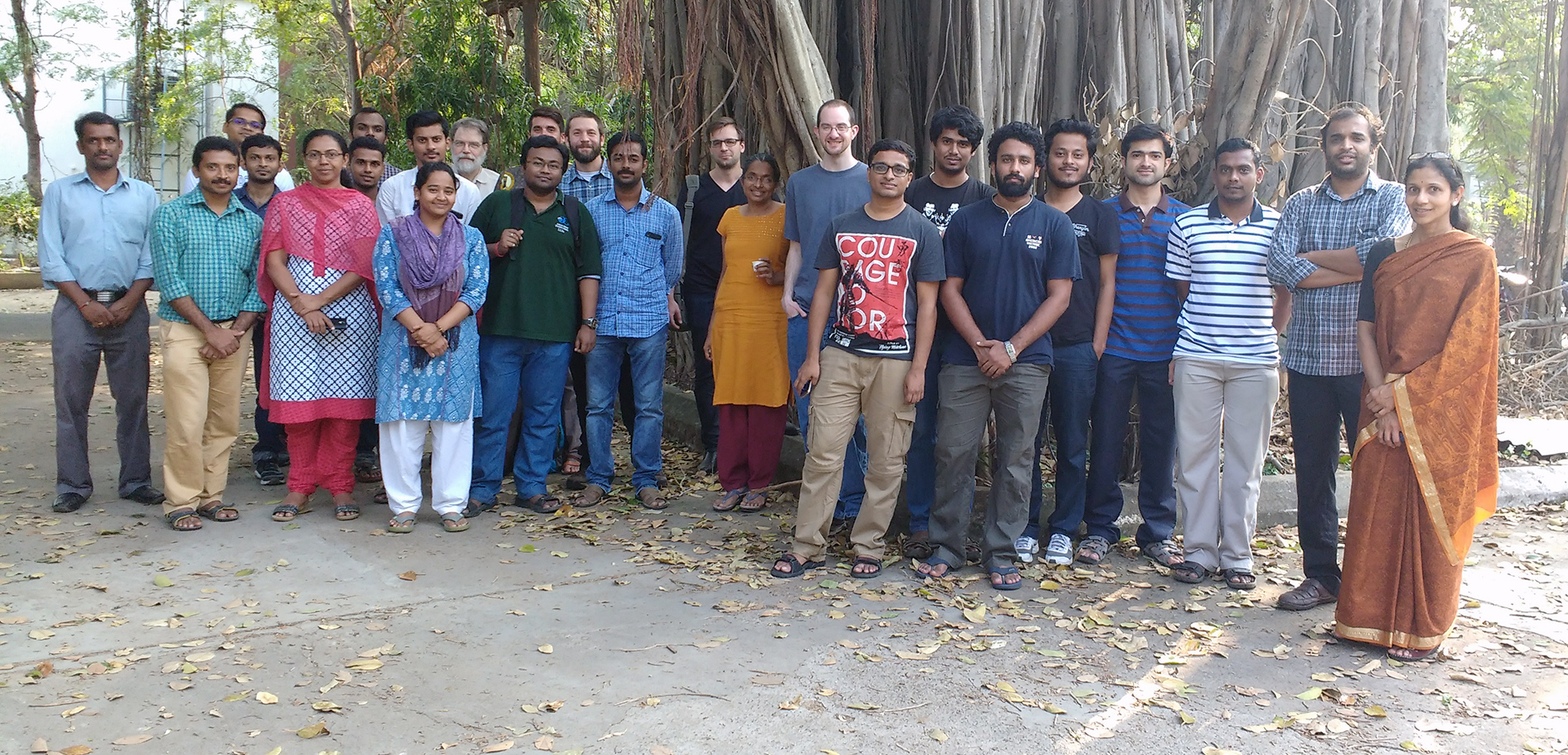News
In January, we (Gualtiero and Amala) participated in a meeting to discuss air-sea interactions and intra-seasonal monsoonal variability in the Bay of Bengal. A workshop was hosted at IIT-Madras along with students and scientists in India.
Read MoreIn the summer of 2016, Sebastian Essink participated in the Helmholtz Institute’s observational campaign to study submesoscale eddies in the Baltic Sea that evolve on time scales of less than a day. An airship and airplanes were used to obtain thermal imagery and track chlorophyll at meter-scale resolution. Coastal research vessels operated from the island…
Read MoreAs part of ASIRI, the Air-Sea Interaction Regional Initiative funded by ONR, we are exploring the role of freshwater on air-sea fluxes in order to improve understanding of the South Asian Monsoons. We are on a research cruise on board the R/V Roger Revelle from August 23 to September 21, 2015. Scientists from several institutions including University…
Read MoreOceans and Climate From WGBH in Boston: Learn about the complex and vital relationship between the oceans and Earth’s climate. She and other researchers at Woods Hole describe how they gather climate and monsoon data via remote sensors in the oceans, and she also explains how international teams work on research cruises like the one…
Read More“Much of this particulate organic carbon, especially the larger, heavier particles, sink. But we wanted to find out what is happening to the smaller, non-sinking phytoplankton cells from the bloom. Understanding the dynamics of the bloom and what happens to the carbon produced by it is important, especially for being able to predict how the…
Read MoreAmala Mahadevan was amongst 50 fellows selected for a fellowship at the Radcliffe Institute for Advanced Study. As a result, she is spending a sabbatical year (2014-15) at Harvard University. During her fellowship year, Mahadevan is devoting time to understanding how the physical complexity of upper ocean dynamics at scales of 0.1–10 kilometers affects oceanic ecosystems. Life…
Read MoreMahadevan, along with Federico Toschi and David Nelson organized a recent workshop at the Radcliffe Institute titled Life in a Turbulent Environment. This workshop convened expertise from the physical, biological and ocean sciences to stimulate a multidisciplinary discussion on how the dynamics of the ocean environment shapes life — ranging from individual plankton and microbes, to…
Read MoreMelissa Omand, who joined the lab as a postdoctoral investigator in 2011, has joined the Graduate School of Oceanography at the University of Rhode Island as Assistant Professor. For more information: http://www.gso.uri.edu/blog/gso-welcomes-prof-melissa-omand/
Read MoreHow Plankton Blooms Absorb CO2 From WGBH: Microscopic plankton play a vital role in the ocean’s absorption of atmospheric CO2. And since that absorption represents about one third of the planet’s CO2, scientists are keen to understand this very complex cycle. Dr. Amala Mahadevan explains how ocean eddies shift layers of warm and cold water, so that the…
Read MoreOcean eddies help jump-start plankton blooms that spread across hundreds of square miles In what’s known as the North Atlantic Bloom, an immense number of phytoplankton burst into existence, first “greening,” then “whitening” the sea as one or more species take the place of others. What turns on this huge bloom, what starts these ocean…
Read More

